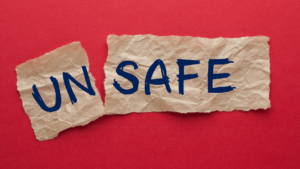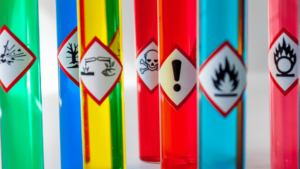There is no such thing as being too careful when it comes to ensuring the safety of your employees. A few simple health and safety tips can make the workplace a safer place for everyone.
HERE ARE A FEW TIPS TO GET YOU STARTED:
1. PROMOTE A CULTURE OF SAFETY
 Encourage employees to report any potential hazards and near-misses – this way, you’ll know about potential risks and be able to mitigate them. Reward employees who identify potential risks with a pat on the back. And make everyone aware that safety is a top priority in your business.
Encourage employees to report any potential hazards and near-misses – this way, you’ll know about potential risks and be able to mitigate them. Reward employees who identify potential risks with a pat on the back. And make everyone aware that safety is a top priority in your business.
2. CONDUCT REGULAR RISK ASSESSMENTS
 A risk assessment is an in-depth examination of a company’s potential risks. It can be conducted at any time, and it should be done regularly. Conducting a risk assessment will help a company identify their current risks and find ways to mitigate them.
A risk assessment is an in-depth examination of a company’s potential risks. It can be conducted at any time, and it should be done regularly. Conducting a risk assessment will help a company identify their current risks and find ways to mitigate them.
Risk assessments are important because they help companies identify their vulnerabilities and potential threats to their assets. This is valuable information to have in order to protect the company from future harm.
A risk assessment helps companies understand what they need to do in order to stay compliant with regulations, such as GDPR or HIPAA. It also helps them avoid fines from regulatory agencies like the FTC or FDA for not complying with these regulations.
In order to reduce the chances of dangerous accidents happening on your watch, it’s a good idea to periodically evaluate risks. Using past data from past accidents and incidents, you can inform your risk assessments.
3. IMPLEMENT EFFECTIVE SAFETY POLICIES AND PROCEDURES

It is crucial to develop comprehensive safety policies and procedures to prevent accidents and injuries in the workplace. Make sure your policies are up-to-date, compliant with all relevant regulations, and that your employees are fully aware of them.
4. INVEST IN SAFETY TRAINING AND EDUCATION
 Safety training and education is essential for the workforce.
Safety training and education is essential for the workforce.
The need for safety training and education is becoming more prevalent as our society continues to advance technologically. It’s important to not only learn how to use the tools of the trade, but also how to safely operate them.
Safety training is a form of instruction that teaches individuals about safety precautions in their workplace or industry. This includes understanding health hazards, learning about equipment risks, and understanding what first aid should be administered if an injury occurs. Safety training can be provided by a company’s HR department or by external organizations such as OSHA (Occupational Safety & Health Administration) or NIOSH (National Institute for Occupational Safety & Health).
Employees are more productive and efficient when they have the appropriate training. Training can help prevent injuries, accidents, and mistakes in the workplace. It also reduces liability for employers, which can lead to lower insurance premiums.
We know that safety training is important and that’s why we offer both online and in-person Corporate First Aid Training. All new employees should also receive safety training.
5. USE THE RIGHT SAFETY EQUIPMENT
 It is important to invest in safety equipment and provide employees with the latest gear to protect themselves and others. Equip them with skills, guidelines and information on how to properly use the right protection for their work environment.Make sure your employees have the right equipment to protect themselves at work. Ensure they can get their hands on PPE that’s always up-to-date and make sure they know how to use it too.
It is important to invest in safety equipment and provide employees with the latest gear to protect themselves and others. Equip them with skills, guidelines and information on how to properly use the right protection for their work environment.Make sure your employees have the right equipment to protect themselves at work. Ensure they can get their hands on PPE that’s always up-to-date and make sure they know how to use it too.
6. PROMOTE A CULTURE OF REPORTING NEAR-MISSES AND ACCIDENTS
 In the workplace, we often hear about near-misses and accidents. These incidents can be a learning experience for everyone. It can also help us identify where potential hazards exist in our workplace.
In the workplace, we often hear about near-misses and accidents. These incidents can be a learning experience for everyone. It can also help us identify where potential hazards exist in our workplace.
A culture of reporting near-misses and accidents will promote more transparency in the workplace. This transparency will help improve the safety of our work environment, because people will be more aware of what is happening around them.
Encourage your employees to report any potential hazards and near-misses. Reward employees who identify potential risks and take steps to mitigate them. And make sure that everyone understands that safety is everyone’s responsibility
7. INVEST IN ERGONOMICS
 Reducing the risk of musculoskeletal injuries at work can help improve your employees wellbeing and reduce the cost of absenteeism. This is why you should assess the workstation design, task requirements and needs of your employees to discover ergonomic risks before implementing potential solutions.
Reducing the risk of musculoskeletal injuries at work can help improve your employees wellbeing and reduce the cost of absenteeism. This is why you should assess the workstation design, task requirements and needs of your employees to discover ergonomic risks before implementing potential solutions.
Musculoskeletal injuries are a major source of lost productivity in the workplace. These injuries can be caused by prolonged sitting or standing, awkward hand positions, heavy lifting and more. To reduce the risk of these types of injuries, it is important to assess workstation design and task requirements.
8. SAFELY USE HAZARDOUS MATERIALS
 The Occupational Safety and Health Administration (OSHA) defines hazardous materials as “any material that is classified as a physical or health hazard.” OSHA regulates the handling of hazardous materials in the workplace and provides guidelines for safe handling of these substances.
The Occupational Safety and Health Administration (OSHA) defines hazardous materials as “any material that is classified as a physical or health hazard.” OSHA regulates the handling of hazardous materials in the workplace and provides guidelines for safe handling of these substances.
This section will cover how to handle hazardous materials safely, how to identify a hazardous material, and how to manage spills of hazardous materials.
If your business uses or produces hazardous materials, it’s important to manage those materials safely. Establish safe handling procedures and train all employees on those procedures. And make sure all containers are properly labeled and stored.
9. MAINTAIN A SAFE AND CLEAN WORK ENVIRONMENT
 A safe and clean work environment is important to reduce the risk of accidents and injuries.
A safe and clean work environment is important to reduce the risk of accidents and injuries.
The first step to maintaining a safe and clean environment is to identify the hazards that are present in the workplace. This will help determine what safety precautions need to be taken.
In order for a workplace to be considered safe, it needs to have proper ventilation, lighting, fire protection, electrical grounding and other precautions.
A clean and well-kept workplace is a safer workplace. Establish and strictly enforce housekeeping standards, provide training on them for all employees, and make sure that employees take full responsibility for maintaining the items at hand.
10. BE PREPARED FOR EMERGENCIES
 Protection measures for your employees are extremely important. You should have an emergency response plan in place and you should make sure all employees know about it. You should also conduct regular drills to ensure that everybody is prepared in case of an emergency.
Protection measures for your employees are extremely important. You should have an emergency response plan in place and you should make sure all employees know about it. You should also conduct regular drills to ensure that everybody is prepared in case of an emergency.
IN CLOSING:
Creating a safe and healthy workplace is essential to the success of any business. By promoting a culture of safety, conducting regular risk assessments, and investing in safety training and education, you can help prevent accidents and injuries in the workplace. And by being prepared for emergencies, you can protect your employees in the event of an accident or incident
Facebook
Twitter
LinkedIn

Leave a Reply